Lots of Bang for Your Gaming Buck
Early on, I was ready to write Salvation Prophecy off as yet another crappy sci-fi game. Lots of indy developers try too hard to replicate what has been perfected by AAA studios. The most successful indies usually focus on just one aspect of a larger game and try to offer a better experience in a smaller, but more enjoyable game. Salvation Prophecy takes many aspects of space games like the Mass Effect francise and the Galaxy on Fire series . Where most other games would turn out generic and boring, Salvation Prophecy has a lot to offer in terms of a full-fledged space opera action RPG, especially for only $20.
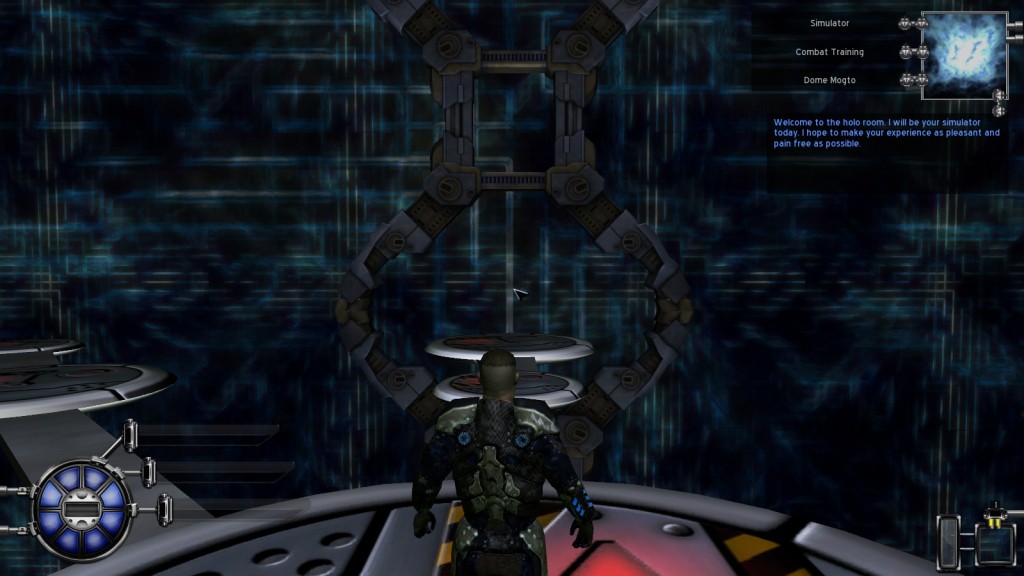
The game tutorial is optional, which is a mercy. If you’ve ever played a basic third-person shooter, you already know how to play.
You begin the game as one of four factions, consisting of humans, evolved humans called the Salvation, evolved drones called the Drone Unity, and a sort of insane man/drone hybrid called the Wyr. Each faction has its own unique weapons and fighting styles, though all possess at least one flavor of basic blaster. This is where the game unquestioningly shines. Fighting a battle as a Salvation soldier feels completely different than as a human or drone. It’s obvious that the game designers spent a lot of time crafting these different species and their efforts shine like diamonds in the moonlight.
I also like the concept of Evolution presented in the game. The Salvation are evolved humans, and the Drone Unity are evolved from AI Drones that the humans previously used. Then there are the Wyr, who descend from a group of scientists who combined with AI drones. The end result is . . . quirky murder machines with scorpion tails. The concept of humanity’s own war machines now fighting against them is present, but the game is not heavy-handed about the morality lesson. They’re an enemy, you fight them. I like this especially, since this would be a soldier’s mentality in such a situation.
The ground battles are similar to Star Wars: Battlefield, and Battlefield 1942. They’re your basic run-and-gun, combined with a little melee action. The factions are balanced well for this. The Salvation are extra vulnerable to melee attack, but are nimble and quick, so it’s pretty easy for them to evade. The Drone Unity are big and easy to spot, but they have a ton of armor to blast through and if they get into melee range, you’re pretty much dead.
Games like this usually fall short in the battle realism department. Most of us hopefully know that gun battles aren’t usually fought by rushing armed troops at each other willy-nilly. With this in mind, there’s not a lot of strategy to the ground battles outside of following your troops and swarming smaller groups of enemy soldiers. The different races have clearly different approaches to fighting, and I especially liked using the Salvation’s deflecting shield against those pain-in-the-ass Wyr turrets that they’re always setting up. But still, no cover, no formations, no commands or organization.
Though the ground combat is lacking, it gave me a new perspective on RTS games like Starcraft. Once you’ve eliminated your enemy’s ground forces, you destroy their structures, which include Barracks, Extractors, and other buildings familiar to RTS fans. It is like taking on the role of a foot soldier in an RTS, which is kind of interesting. It would be nice if there were some clear orders from some “eye-in-the-sky” to complete the experience.
Space Battles: A Real Bright Spot
The Space battles are definitely the highlight of the game. You can “jump” your ship to different locations, during which you play a mini-game of avoiding arcs of electricity in your jump portal. Wormholes are also around, they function similarly to the wormholes in Galaxy on Fire, though with a similar minigame involved where you try to keep your ship from touching the sides of the wormhole. It’s not too difficult, and it serves as a pretty good warm-up for the actual space combat. Fighting in space is a lot like the ground fights, except with the ability to move in more directions. The random, “run-and-gun” fighting makes more sense for a flying war. I know there are formations in dogfights, but most of them depend on a pilot’s individual ability.

Pilot training is also optional. I opted for it because there still seems to be different ideas of how a gamepad should control a spacecraft.
Salvation Prophecy overcomes the problem of most space shooters having crappy controls in a clever way. Pressing the left trigger brings up a targeting reticle and two brackets to help you focus on your target. It also refines your steering so that the stick is much less sensitive and your movements are smaller and more subtle. This is a huge help in wormhole tunnels, which ding your shields if you hit the walls. It’s really the perfect fix-it for maintaining control in crazy space battles. (Author’s Note: I play all of my PC games with an X-Box controller, compatibility permitting)
You recieve missions and assignments from different NPC’s in the Mission Control room of any given fortress (a space station with defensive capabilities orbiting a planet). If your commander orders a ground assault to conquer a planet, you head for your drop-ship. If a space-based mission, you head for your personal spaceship. Just like in Mass Effect and Galaxy on Fire, your ship is upgradeable. Once you reach a certain level, you can start adding experimental technology.
Space dogfighting becomes increasingly intense as the game progresses, and your access to new tech and abilities seems to coincide with the enemy finding upgrades of their own. This keeps the game interesting and makes sure that you’re still being challenged even when you’ve outfitted your ship with dozens of missiles, shield regenerators, EMP’s, and upgraded energy cores.
The game’s tendency toward run-and-gun means you’ll end up being the last one standing on a regular basis. It didn’t happen with every battle, more like every third battle, and usually toward the end. The first few times I found it frustrating, but eventually it felt heroic and noble. And as I improved, I started receiving bigger rewards for accuracy, damage, and most kills.
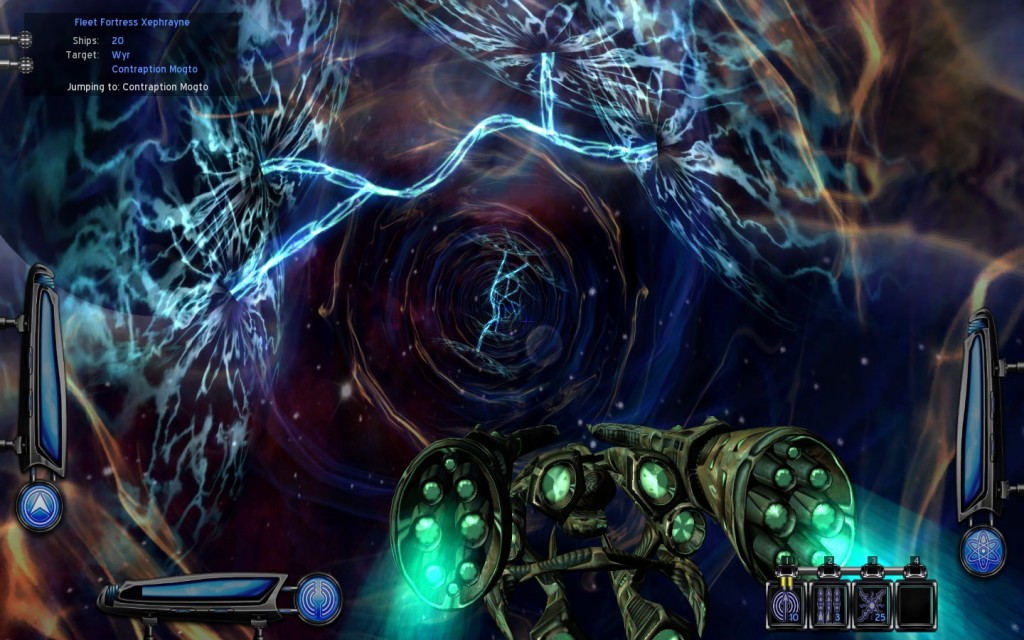
Here is my ship inside the “Jump” Tunnel. It was a good decision to differentiate between “Jumping” and using a Wormhole. Makes the galaxy feel big, and sprinkles just the right amount of extra challenge.
The RPG elements in the game are interesting, and affect real game play enough for me to call it an “Action RPG.” Your character gains skills as you progress through experience points, and the rewards you earn for winning battles and hunting down bounties allows you to buy upgraded weapons, armor, ship enhancements, and experimental tech.
The central storyline revolves around a prophecy (spoiler alert!), which leads your character to take on missions for a Cartographer in your faction who continually discovers new unstable wormholes. I won’t give away exactly what happens when you travel through one of these wormholes, but I’ll just post this image here and you can use your imagination:
The central storyline of the prophecy is a bit goofy, but I didn’t mind it because it led to more exploration and discovery. It also helped make the universe feel old, something that I think is important for a sci-fi game. One big gripe I had about the Mass Effect sequels was that the mechanic of flying the spaceship through sectors and scanning planets made the universe feel utterly claustrophobic. Salvation Prophecy’s universe feels nice and big, and I especially appreciated how the jump system automatically added the nearest wormhole-adjacent planets in your system so I didn’t have to continually check my galactic map to find my way.
I do have a few gripes about this game, chief among them being the ground battles. In addition to the lack of cover-based strategy, the planets themselves are uglier than a bulldog with leprosy. The entire time I fought planetside, I asked myself, “Why are we trying to conquer this planet again?” Since some of the buildings are called “Extractors” then presumably the worlds are rich in natural resources. That only makes the battles more depressing because it means that all four of our races are nothing but exploitative capitalists who make the bad guys in Avatar look like Greenpeace.
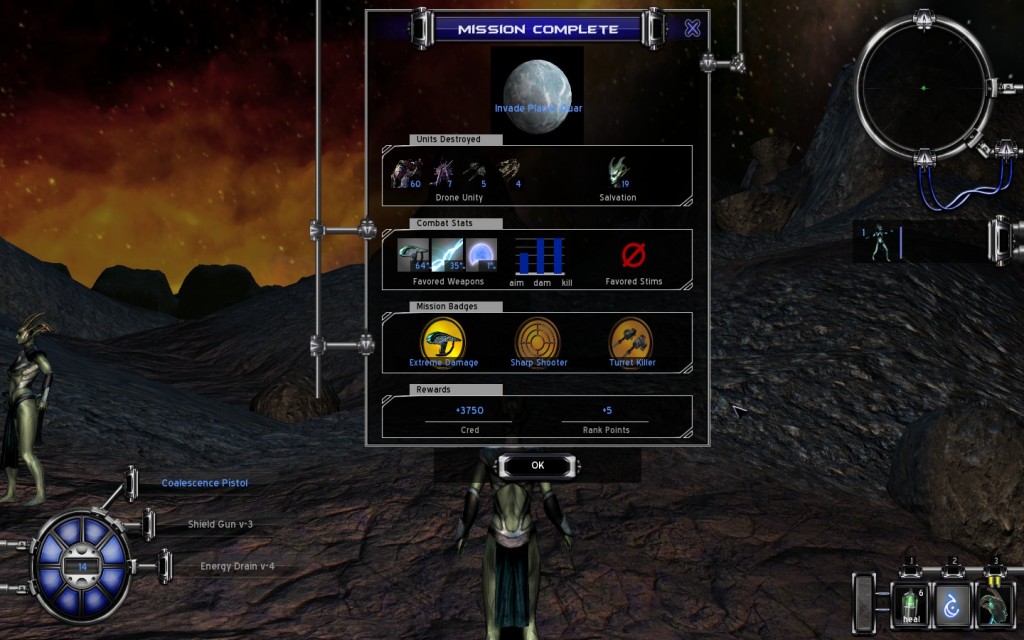
Here is a good pic of the after-battle awards. Also, you can see the planet we just conquered in the background, famous for its complete lack of plant or animal life and its similarity to a soggy lump of coal.
The game does become more interesting once you are promoted to the rank of Faction C0mmander because then you can direct your faction’s conquests and ambitions. You can contact other species and attempt to broker peace or surrender. While conquering planets with abundant resources is fun and profitable, the game suddenly shoulders you with the responsibility to build up defenses for each planet and fortress out of your own pocket. It probably won’t bankrupt you, but it will mean putting off upgrades for the sake of ensuring colonial security. And though you can try to be strategic about which resources you conquer, it’s still going to be the same old run-and-gun on the planet surfaces. A little on-planet command system, at
While the game is incredibly well-balanced and much more enjoyable and playable than I was expecting, there’s no question it needs a makeover, possibly even a facelift. We’re not talking 1998 graphics or anything, but at best it looks like a low-res Knights of the Old Republic. I know graphics aren’t everything, but graphics affect immersion, and a fresh coat of paint would go a long way to convincing AAA players that it is a quality, fun game with loads of value for its price.
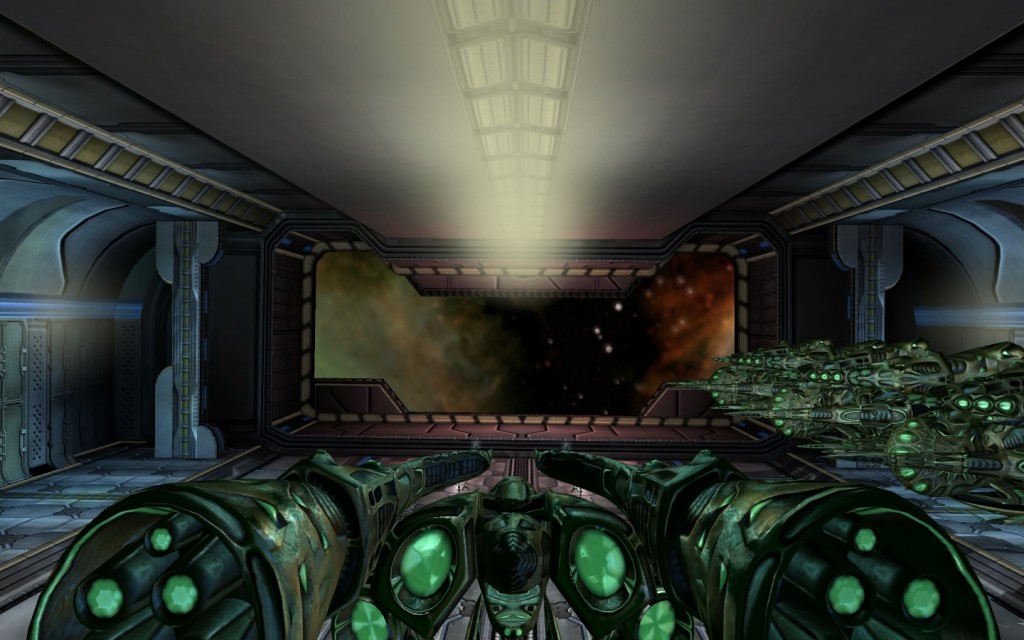
Don’t be fooled by my few misgivings – this is a good game! I enjoyed some of the little elements like this; a hangar partly full of other ships. When there’s a call for a space battle, you sometimes have to wait for other ships to leave the hanger first.
Also, as much fun as the space dogfighting can be, it gets repetitive after a while. As I progressed, the factions all began building large battleships and adding mechs to their planetary defenses. While I was expecting these additions to add greater complexity to the battles, it really just added another giant thing to kill. In fact, the addition of battleships to defend the fortresses greatly increased how often I was the last ship left, which eventually didn’t feel heroic so much as inevitable and sad.
Bottom Line: Salvation Prophecy is a good game for its price. It has lots of action, a simple but relevant RPG system, diversity in its galactic races, and overall is a lot of fun. It is let down somewhat by outdated graphics, lack of strategic direction in ground battles, and faction upgrades that do little more than extend the time required in a battle rather than increase its compexity.
Overall Score: 8/10

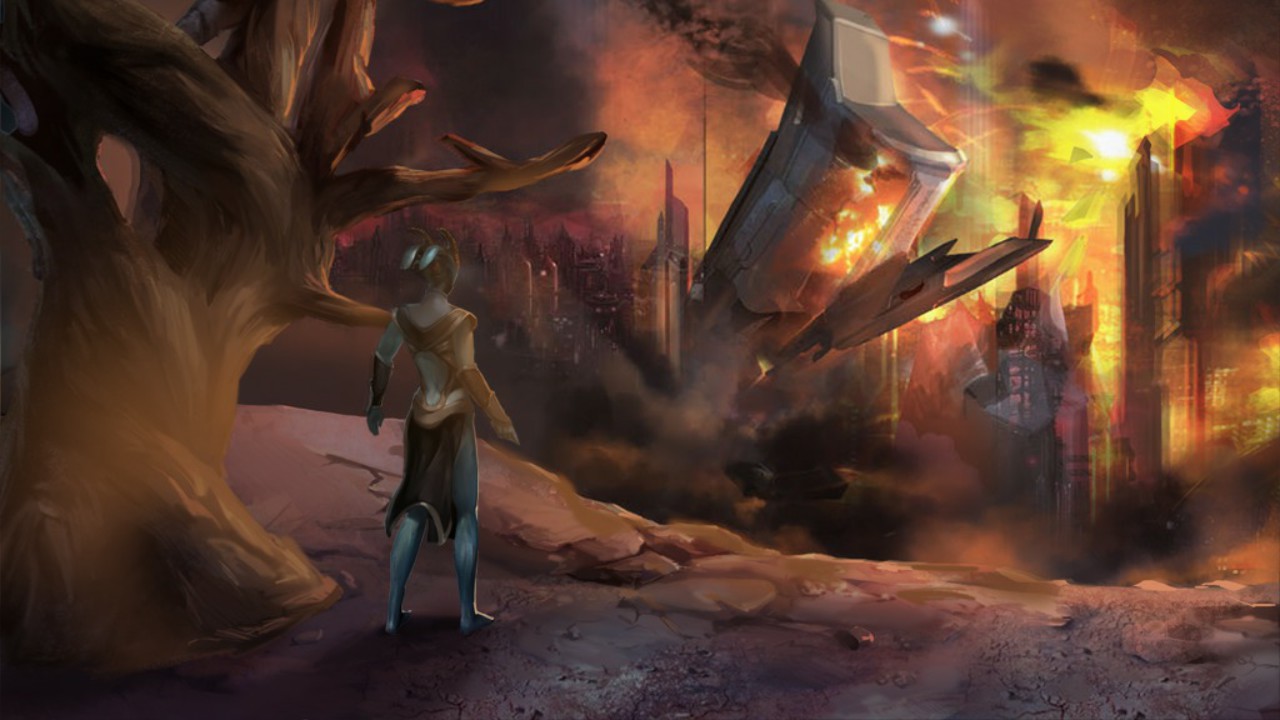
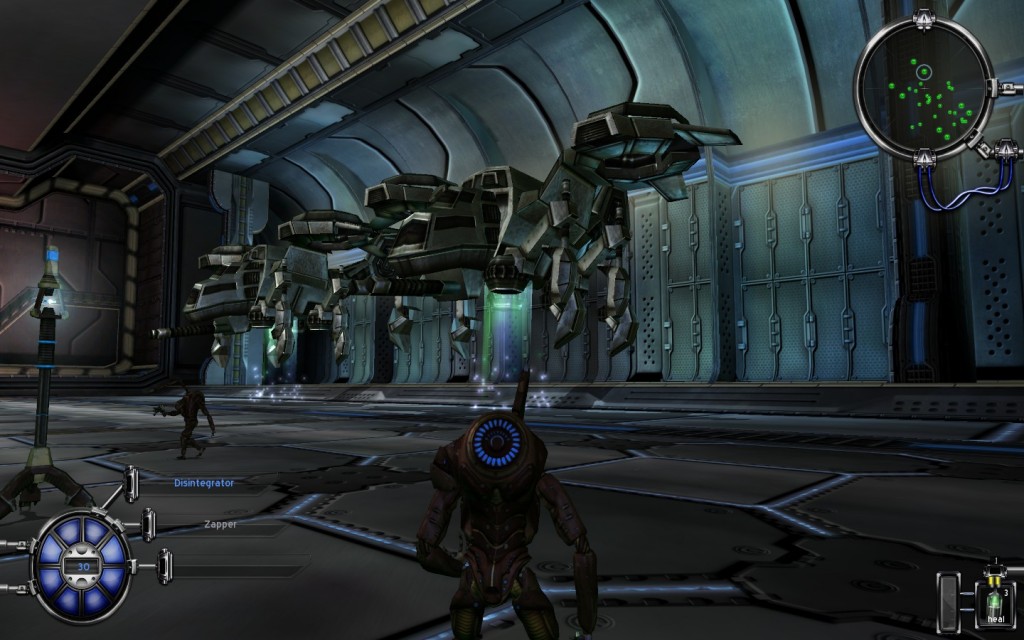
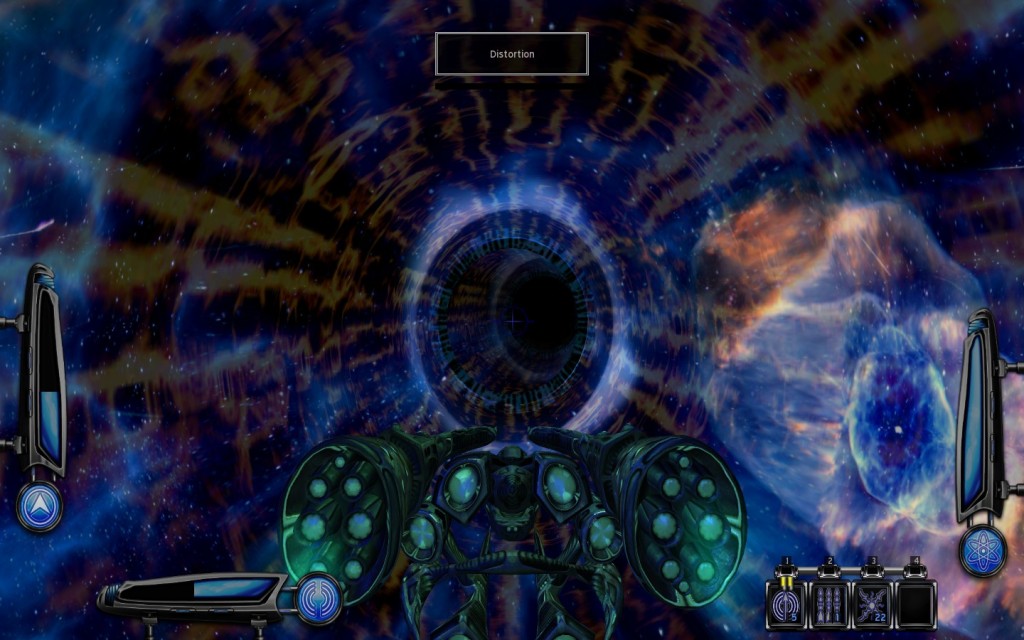

You had me at dinosaurs and worm holes.
Too many games suffer from lack of dinosaurs and wormholes, often favoring one over the other, or even foregoing both. This game is not one of them!
Thanks for the review, Justin. It is quite descriptive, attentive to detail, and fair in its critiques.
Thanks for stopping by! And thanks for making a game that exceeded my expectations!